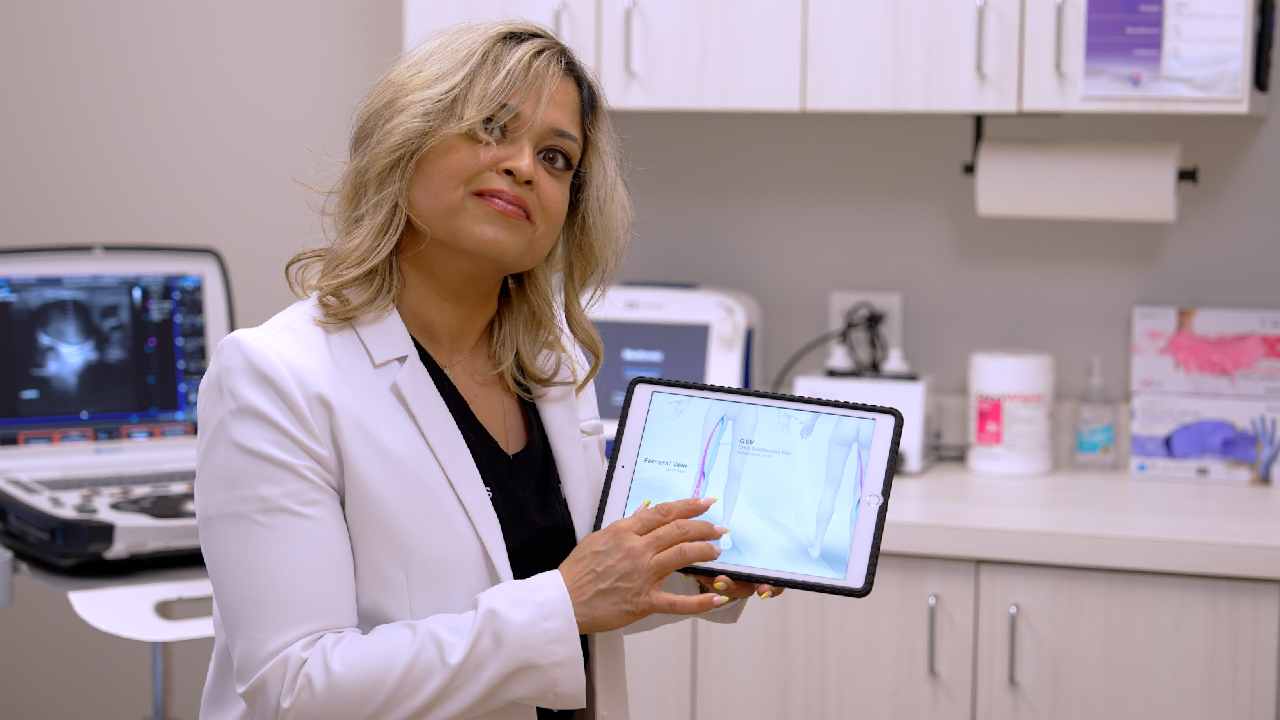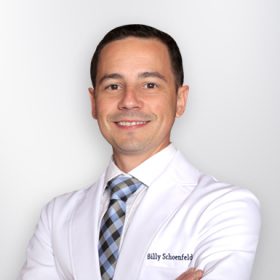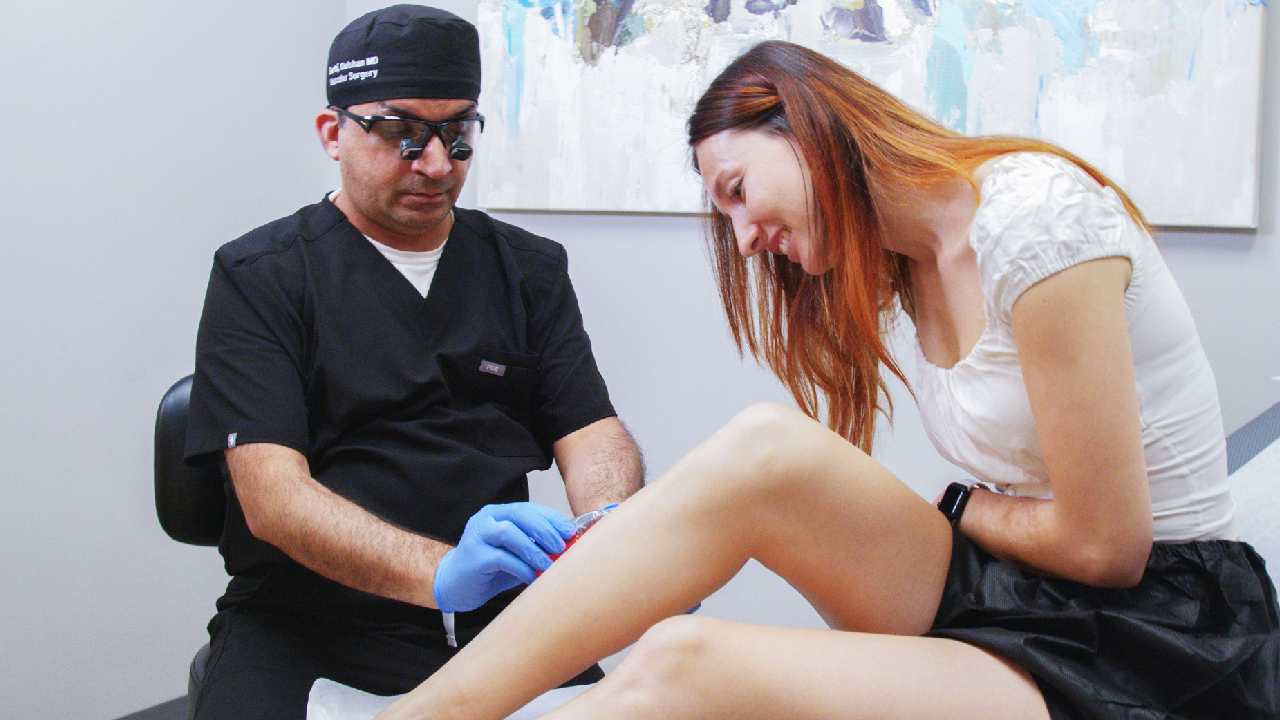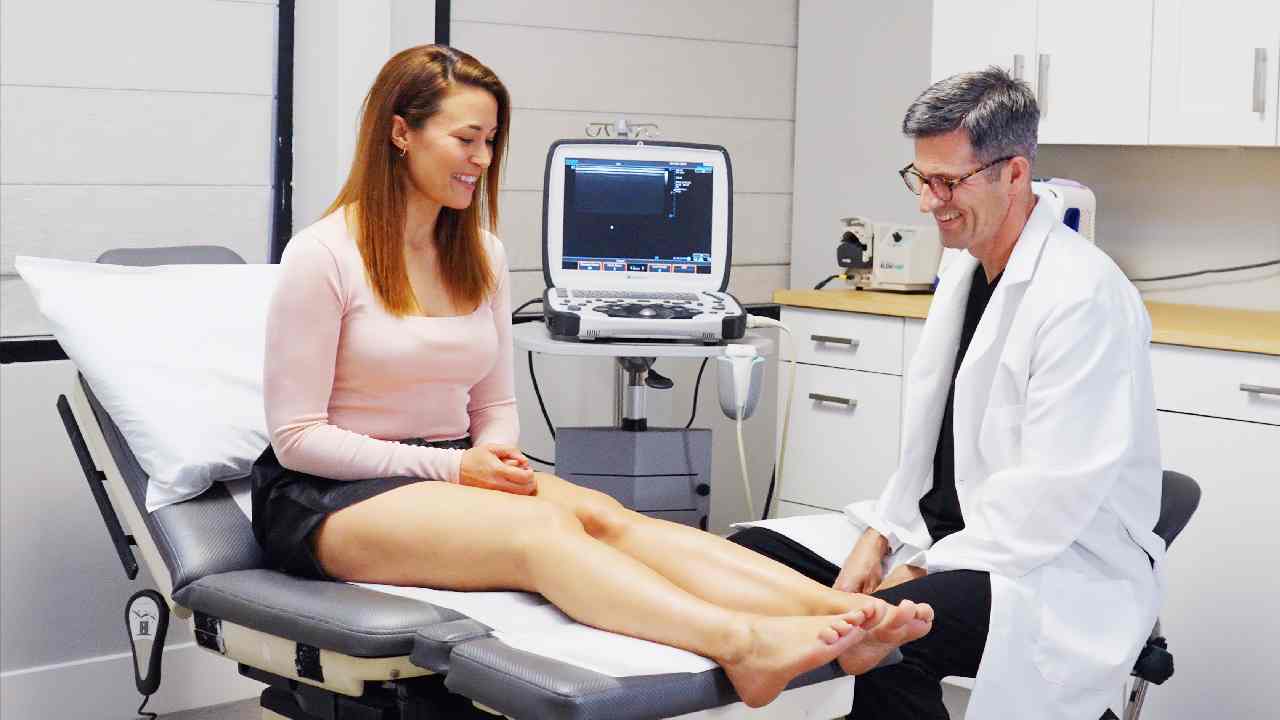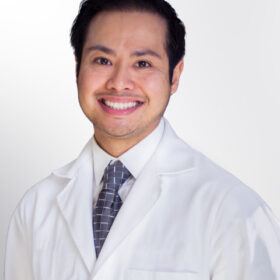
Treat Venous Reflux with Dr. Kindelan
Summary
Venous reflux is a condition in which blood fails to flow properly back to the heart, leading to the formation of varicose veins and other symptoms. Dr. Kindelan treats venous reflux with a personalized approach, using minimally invasive techniques such as endovenous laser ablation, VenaSeal, and sclerotherapy.
Have you noticed your legs feeling heavier than usual, or perhaps you’ve seen unsightly veins creeping up your legs? These could be early signs of venous reflux, a common condition that affects millions of people. When left untreated, venous reflux can lead to more severe issues like varicosas and chronic venous insufficiency. If you’ve been struggling with these symptoms, it’s time to consider minimally invasive vein treatment.
At Vein Treatment Clinic in San Diego, Dr. Joshua Kindelan specializes in diagnosing and treating venous reflux with minimally invasive procedures. Whether you have spider veins on your legs or more serious varicose veins, Dr. Kindelan’s expert care can help restore your legs’ health and appearance. With his extensive background in cardiovascular surgery, he brings a unique set of skills to offer effective, non-invasive vein treatments that fit your lifestyle.
Are you interested in getting more information about your condition or getting a treatment?
Fill the form below to start!
What Is Venous Reflux?
Venous reflux occurs when the valves in the veins, which are responsible for preventing blood from flowing backward, become damaged or weakened. This causes blood to pool in the veins, leading to discomfort and visible veins, such as varicosas.
The condition is most commonly seen in the legs because they are furthest from the heart, and gravity makes it harder for blood to flow upward. Over time, untreated venous reflux can cause more severe health issues, including insuficiencia venosa crónica.
Common Signs and Symptoms of Venous Reflux:
You might notice some or all of the following symptoms if you’re dealing with venous reflux:
- Legs feel heavy, especially after prolonged standing or sitting
- Swollen ankles or feet, particularly in the evening
- Estas venas várices that are twisted, bulging, or blue in color
- Aching or cramping sensations in the legs
- Spider veins on legs, which are smaller and closer to the skin’s surface
- Skin discoloration or irritation around veins
- Leg fatigue that worsens with activity
If these symptoms sound familiar, it’s important to consult with a vein doctor to determine if you have venous reflux or chronic venous insufficiency.
How Venous Reflux Can Lead to Chronic Venous Insufficiency and Varicose Veins
When blood flow in the veins becomes restricted due to venous reflux, it can eventually lead to insuficiencia venosa crónica (CVI). CVI occurs when the veins are unable to effectively return blood to the heart, leading to swelling, skin changes, and ulcerations in the affected areas.
As venous reflux worsens, varicosas often develop. These veins are enlarged, twisted, and visible just beneath the skin, usually in the legs. If left untreated, both CVI and varicose veins can become more painful and cause permanent skin damage, ulcers, and other complications. Thankfully, these issues can be managed or prevented from progressing.
How Dr. Kindelan Treats Venous Reflux
Dr. Joshua Kindelan’s approach to treating venous reflux involves thoroughly evaluating the root cause using diagnostic tools such as duplex ultrasound. This allows him to pinpoint the areas where blood flow is compromised and determine the most effective treatment. Once a diagnosis is made, Dr. Kindelan will recommend a minimally invasive vein treatment for your condition.
Endovenous Laser Ablation (EVLA)
One of the most popular and effective treatments for venous reflux is endovenous laser ablation (EVLA). This procedure involves using laser energy to close off the affected veins. The laser is inserted into the vein through a small incision, and the energy heats the vein walls, causing them to collapse. The blood is then rerouted to healthier veins.
EVLA is an outpatient procedure with minimal discomfort and a short recovery time. Most patients can return to their regular activities within a few days.
VenaSeal
Another effective option for treating venous reflux is VenaSeal, a revolutionary treatment that uses medical adhesive to close off the problematic veins. This procedure does not require heat or lasers, making it a great option for patients who prefer a needle-free approach. After applying the VenaSeal adhesive, the treated vein is sealed shut, and blood redirects to healthier veins.
VenaSeal is quick and effective and typically requires little to no downtime, allowing you to get back to your day-to-day life quickly.
Escleroterapia
For smaller veins, sclerotherapy is an excellent spider vein treatment. This involves injecting a solution into the affected veins that causes them to collapse and fade over time. Sclerotherapy is often used for spider veins and smaller varicose veins.
Typically, patients can resume normal activities immediately after the procedure, though a few follow-up sessions may be needed to achieve optimal results.
Radiofrequency Ablation (RFA)
Radiofrequency ablation is another non-invasive procedure that uses heat to close off damaged veins. A catheter is inserted into the vein, and radiofrequency energy is delivered to the vein walls, causing them to collapse and seal. RFA is a highly effective treatment with a quick recovery time and is often recommended for larger veins.
Flebectomía ambulatoria
In some cases, ambulatory phlebectomy may be recommended. This procedure involves removing the damaged veins through small, minimally invasive incisions. It’s typically used for varicose veins that are too large for other varicose vein treatments.
Ultrasound-Guided Foam Sclerotherapy
When treating more complicated cases of venous reflux, ultrasound-guided foam sclerotherapy can be used to target veins deep within the leg. The foam is injected into the affected veins and guided by ultrasound to ensure precise treatment. This method is effective for veins that cannot be treated with standard sclerotherapy.
FAQs
What Causes Varicose Veins?
Estas venas várices are caused by weakened or damaged valves in the veins, often due to venous reflux. When these valves fail, blood pools in the veins, causing them to enlarge and become visible on the skin’s surface. Genetics, aging, and prolonged standing or sitting can increase your risk of developing varicose veins.
When to Worry About Varicose Veins?
You should consult a vein doctor if your varicose veins cause pain, swelling, or other symptoms like leg fatigue or cramping. In severe cases, untreated varicose veins can lead to skin ulcers or even deep vein thrombosis. Contact us to determine the best course of vein treatment.
What Are Spider Veins on Legs?
Spider veins on legs are smaller, superficial veins that appear as red or blue lines on the skin’s surface. They are caused by blood flow issues similar to varicose veins but tend to be less severe. Spider veins are often treated with sclerotherapy.
How Can I Treat Legs That Feel Heavy?
If your legs feel heavy, it could be a sign of venous reflux or venous insufficiency. Treatment options like endovenous laser ablation y VenaSeal can address the underlying cause of the discomfort and provide relief.
What Is Venous Insufficiency Treatment?
Venous insufficiency treatment involves addressing the weakened or damaged veins that cause poor blood flow. Minimally invasive vein treatments like endovenous laser ablation y VenaSeal are commonly used to restore blood flow and alleviate venous reflux symptoms.
Learn about our vein treatments and how Dr. Kindelan can help you feel better. Whether you’re dealing with varicose veins or insuficiencia venosa crónica, contact us to find a vein doctor at our San Diego location at 5330 Carroll Canyon Rd No. 140. We also have other vein treatment clinics in San José, Palo Alto, Temecula, and more.
FEATURED POSTS BY VEIN DOCTORS









